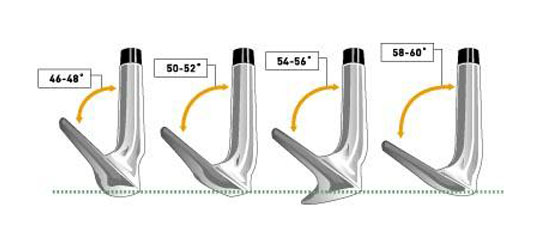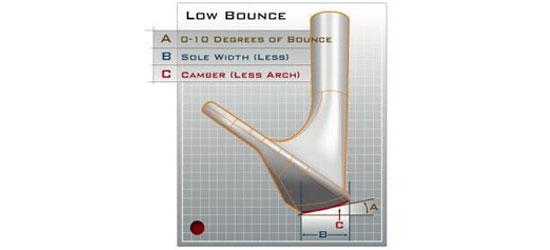Thinking all wedges are the same? Think again! Whether your swing is steep or shallow, the sand at your local course fine or coarse, or your home fairways like concrete or soggy can make a huge difference. Add to that variables like the length and type of rough, your preferred ball—low and running or high and stopping—and you've got a lot to consider before choosing your wedge.
Mastering your wedge game is key to achieving lower scores. Given the distance modern drivers can achieve, a significant portion of your game—often within 120 yards of the hole—relies on precision wedge play. It's common for top golfers to carry three or even four different wedges, dedicating hours to practice, ensuring they know exactly how each performs under varying conditions.
Nowadays, most iron sets end at the pitching wedge (5-PW), leaving you to select your own gap, sand and lob wedges from a vast selection. Here's what to consider when choosing yours:
- Wedge Loft: This affects the distance your shots can cover.
- Bounce Angle: This influences how your wedge interacts with the ground or sand upon impact.
- Finish: While largely a matter of taste, the finish can subtly affect spin.
Understanding Wedge Loft

For beginners, navigating the array of available lofts can be confusing. Here's a primer: Wedges are essentially any iron with a loft greater than 45 degrees, starting with the pitching wedge.
- Pitching Wedge (PW): Included in most iron sets, it's designed for longer shots into the green, usually lofted between 46-50 degrees.
- Gap or Approach Wedge (GW/AW): With a loft between 50-55 degrees, it fills the distance "gap" between the pitching and sand wedge.
- Sand Wedge (SW): Typically lofted between 54-58 degrees, it's ideal for bunker shots due to its high bounce.
- Lob Wedge (LW): Lofts of 60 degrees or more are for creating high shots over short distances. Phil Mickelson is famously adept with this wedge.
The most common selections include 56 and 60-degree wedges, complementing the set's pitching wedge.
Bounce Angle
The "bounce" refers to the part of the wedge that allows it to "bounce" off the sand or turf instead of digging in. It's particularly visible in the gap between the ground and the leading edge at address.
- Low Bounce Wedges: Suited for firm conditions and tight lies, perfect for those with a shallower swing or who prefer finesse shots

-
Standard Bounce Wedges: Versatile for various conditions, ideal for average to steep swings.

- High Bounce Wedges: Best for soft conditions or sand, preventing the wedge from digging in on impact.

Wedge Finishes
Wedges come in various finishes—chrome, black nickel, and more—with the primary differences being aesthetic. However, matte finishes reduce glare, and "raw" finishes are designed to rust over time, potentially adding more spin.
Final Thoughts
We hope this overview helps you navigate the wide selection of wedges available. Experimentation is key, so be sure to 'try before you buy' if the opportunity is there to do so!

